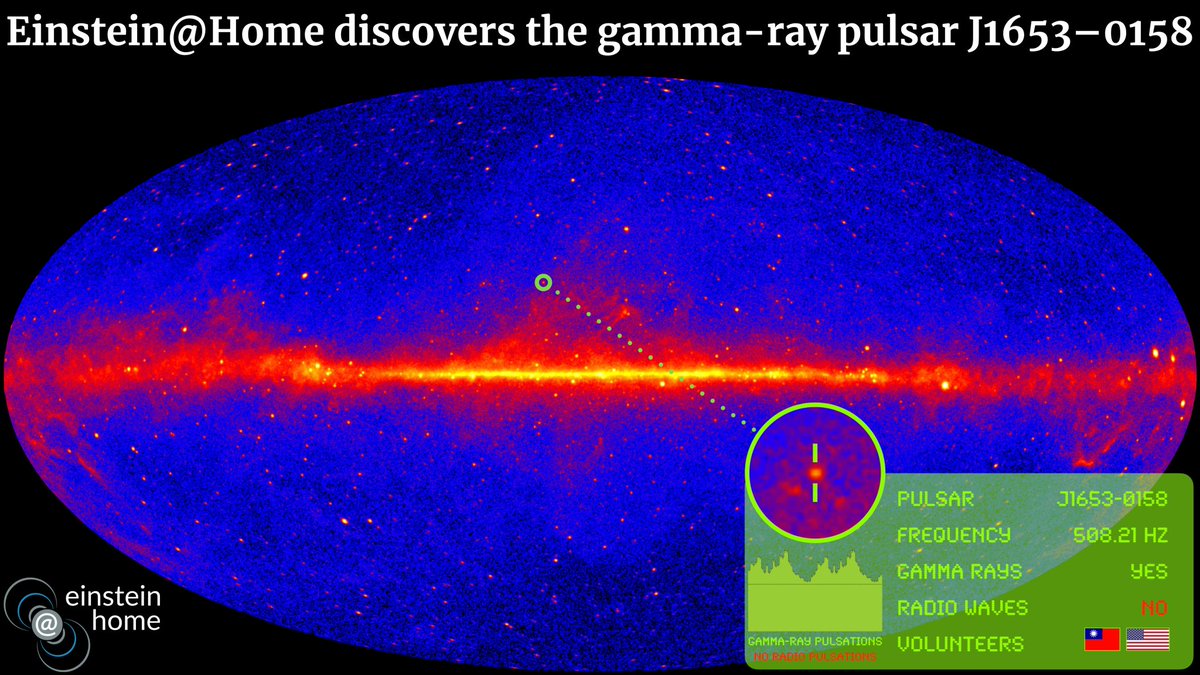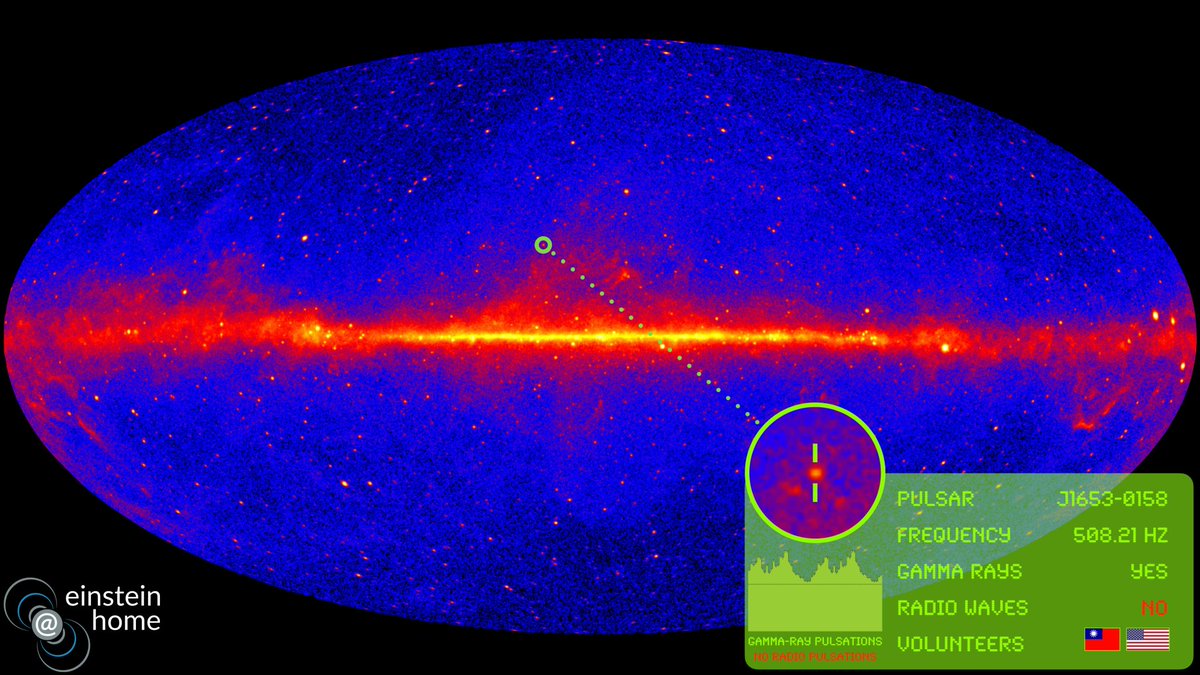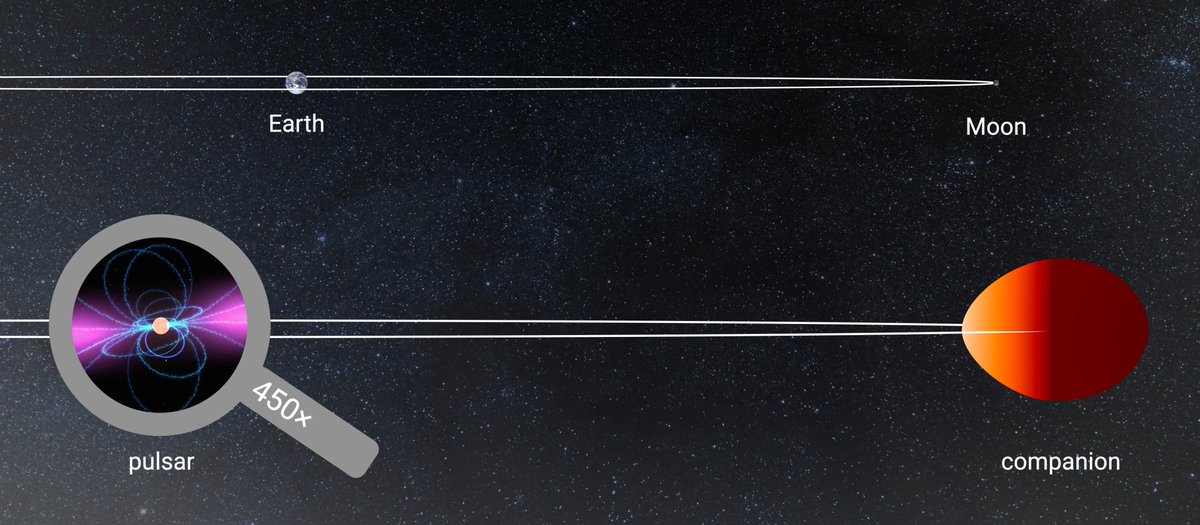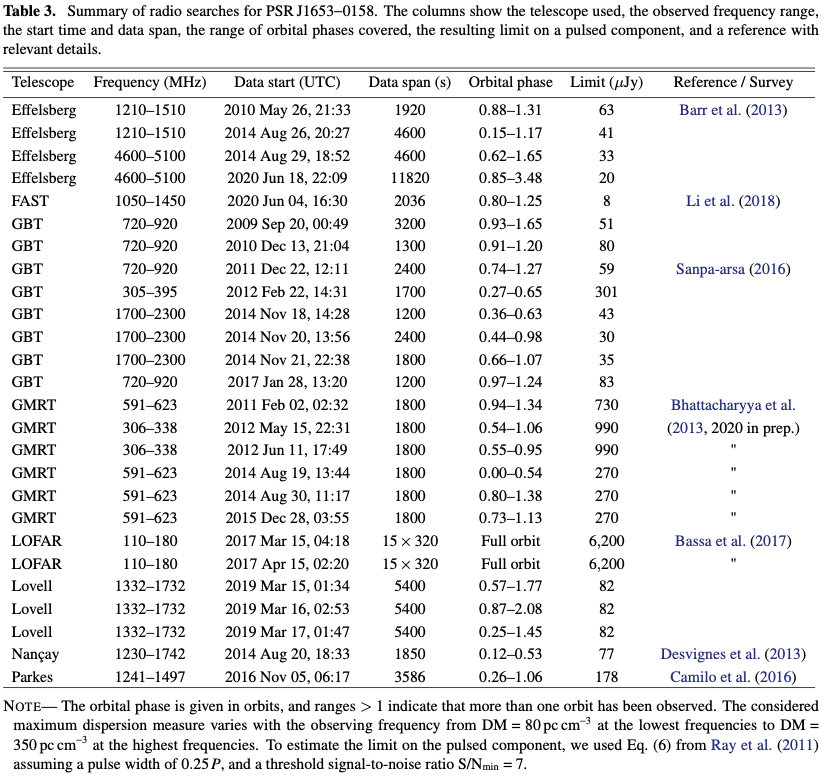Super heavyweight and flyweight in a cosmic dance – volunteer distributed computing project @EinsteinAtHome discovers a #NeutronStar in an unusual binary system: https://www.aei.mpg.de/545717/superschwergewicht-und-fliegengewicht-im-kosmischen-tanz.">https://www.aei.mpg.de/545717/su... Paper: https://iopscience.iop.org/article/10.3847/2041-8213/abbc02">https://iopscience.iop.org/article/1...
Why is this exciting? Since 1999, there has been growing evidence that a gamma-ray source in our Galaxy is home to a rapidly rotating neutron star (a compact stellar remnant) in a tight binary star system. Now this assumption has finally been confirmed.
The first steps towards this were observations (with optical and X-ray telescopes) made by other astronomers in 2014, from which some properties of the orbits of the binary star system were determined: https://iopscience.iop.org/article/10.1088/2041-8205/794/2/L22,">https://iopscience.iop.org/article/1... https://iopscience.iop.org/article/10.1088/2041-8205/793/1/L20.">https://iopscience.iop.org/article/1...
By using the info from these earlier observations, an international team led by @mpi_grav researchers focussed the computing power of the #CitizenScience project @EinsteinAtHome to identify the neutron star by its gamma ray pulsations. Their method: https://arxiv.org/abs/2004.11740 .">https://arxiv.org/abs/2004....
With the computing power of about 10,000 graphics cards donated to @EinsteinAtHome by volunteers, the research team identified the neutron star in @NASAFermi data as a gamma-ray pulsar J1653-0158 and characterized its companion. @NASA animation of a similar system:
It’s an odd couple: a super heavyweight (neutron star, 2x the Sun’s mass, 20 km in size) and a flyweight (companion star with about 1% of the Sun’s mass and roughly the size of Jupiter) orbit each other in 75 min, faster than all similar systems. Artist’s impression (to scale):
The neutron star rotates 508 times each second – one of the fastest of its kind. The companion has ≥6 times the density of lead and is probably the remnant of a white dwarf. The neutron star (gamma rays & particle wind) evaporates the companion over time. Animation: @NASA
While the gamma rays pulsations of the neutron star were teased out of the @NASAFermi data, it seems to be completely invisible in radio waves – most likely a consequence of the evaporated companion material: it is plasma that absorbs the radio waves. Table 3 from the paper:
This odd couple could be just one of many similar systems. There are dozens of sources like it in the @NASAFermi data. They look like pulsars, but no one has been able to detect their pulsations yet. This is exactly what the @EinsteinAtHome research team wants to do! pic: @NASA
If you want to participate and discover a pulsar, like in this case Yi-Sheng Wu from Taoyuan, Taiwan and Daniel Scott from Ankeny, Iowa, USA, you can do so by joining @EinsteinAtHome at https://einsteinathome.org/de/join .">https://einsteinathome.org/de/join&q...

 Read on Twitter
Read on Twitter







